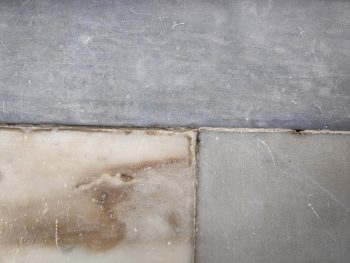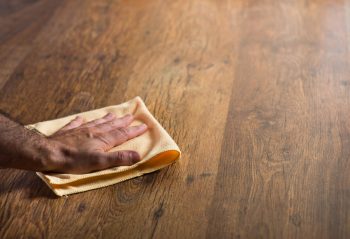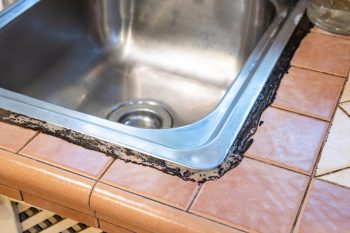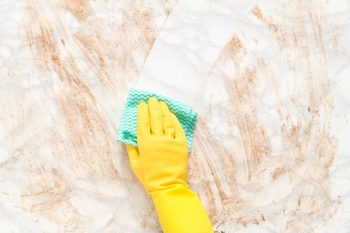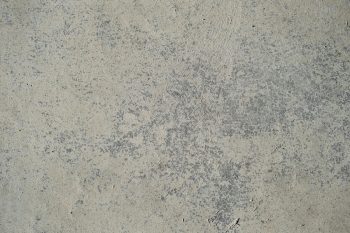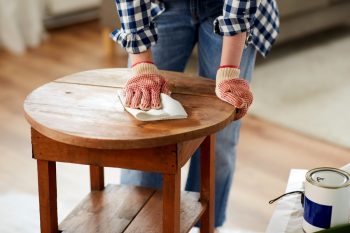
Sitting on your backyard deck while enjoying the summer sunshine, sipping on a refreshing beverage, and cooking food on your grill is one of life’s great joys.
Our decks truly become another living room during the warmer months – but if you tried pressure washing your deck to clean it, only to leave marks, you’ve got an eyesore on your hands.
Let’s talk about some ways to remove those power washer marks and make your deck the envy of the neighborhood.
If you tried power washing your deck only to leave unsightly marks, have no worries. Let’s talk about some proper pressure washer techniques. The key topics we’ll be covering include:
- How far away to hold your pressure washer wand
- Using the correct PSI
- Pressure washing with the grain of the wood
- Working from high to low
- Adding cleaner to your washer for particularly dirty areas
Then, we’ll learn how to get your pressure washer marks off your deck. You may need to sand your decking with coarse, medium, and fine-grit sandpaper.
After sanding, you’ll need to grab your matching paint, stain, or sealer and apply your finish.
Pressure washers aren’t like computers – there’s no undo button. Once you create a mark, either by holding the wand too close to the area being cleaned or by using too much pressure, you can’t make the mark go away with the push of a button. Fortunately, there are remedies, which we will delve into below.
How To Pressure Wash Your Deck
An ounce of prevention is worth a pound of cure, so let’s look into how to use your pressure washer correctly. This will save you the hassle of fixing those pesky washer marks the next time you go to clean your deck.
1. Hold the Wand 12″ or More Away

Holding the wand too close to the surface you’re cleaning is the top reason for pressure washer marks. The wand can get too close to what you’re power washing because you get distracted, you’re in a hurry, or you’re trying to dislodge a particularly stubborn stain.
Suddenly, you’ve turned wood fibers into pulp or stripped your deck of its finish.
Ensure the wand of your power washer is at least 12″ from the surface you’re always cleaning. Hold it firmly (two hands!), and pay attention to where you’re spraying.
Try to keep the distance between the wand and the decking consistent.
2. Use the Lowest PSI Possible
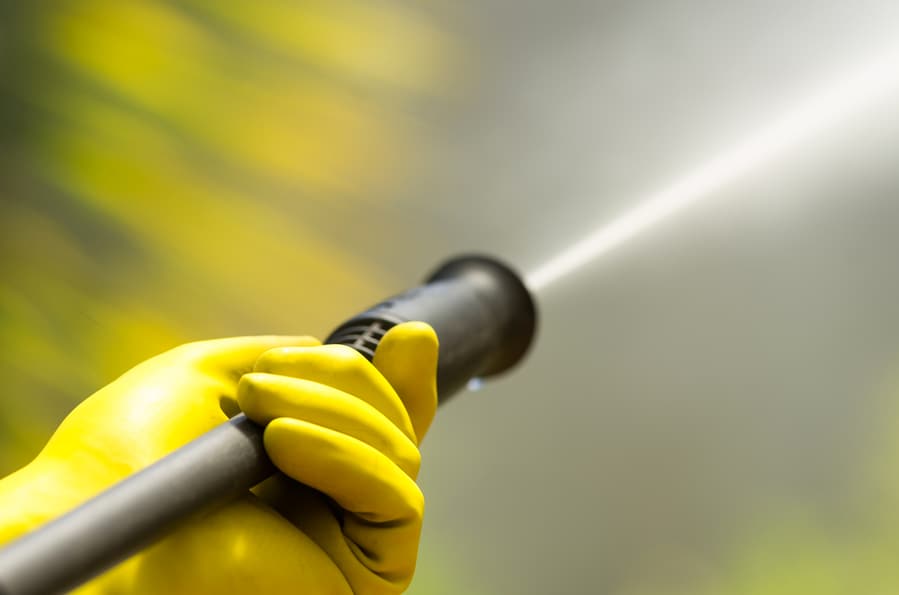
While jacking your power washer to the highest PSI setting and letting her rip may seem fun, it will mark and gauge your beautiful deck.
If washing softwood (most decks), start around 400-600 PSI of force. More pressure than this can remove any finishes that were applied and roughen the wood.
The vast majority of decks are made from softwoods, usually either pressure-treated pine or cedar. You don’t need a lot of pressure to clean softwood, as higher PSI can gouge the wood.
Since pine and cedar mark easily, clean them gently with your pressure washer at around 400-600 PSI.
If your deck is made from an engineered product or an exotic, weather-resistant hardwood, it may be able to handle higher PSI. However, it’s always best practice to try cleaning it at lower pressure first.
3. Wash With the Grain

Like sanding wood, you’ll want to wash your deck with the grain. Holding your wand with two hands, wash with a long swooping motion. For best results, keep the distance between your wand and your deck consistent as you clean.
4. Wash From High to Low
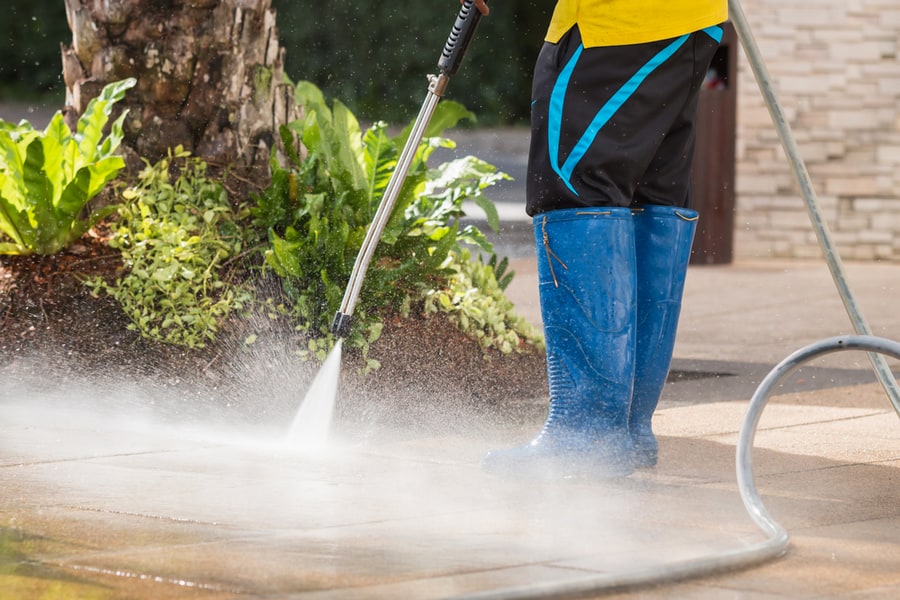
Cleaning from high to low is a universal truism, and it applies to pressure washing your deck. If you clean your decking before your handrail, you’ll get dirt on your decking and need to rewash it.
Tackle your handrails and balusters first before pressure washing your deck surface. Then, continue to wash your joists, beams, and support columns if necessary.
5. Use a Cleaner if Needed

There are specially formulated cleaners that can be used with pressure washers. Typically available from your local hardware store in gallon jugs, stick one in the dip tube of your power washer and apply it to your deck.
Check your power washer’s instructions to discover how to toggle the spray discharge between cleaning liquid and pressurized water.
While most cleaners available today are non-toxic and non-marring, it’s always prudent to test an inconspicuous location of your deck before applying it to your entire deck.
Sand if Necessary
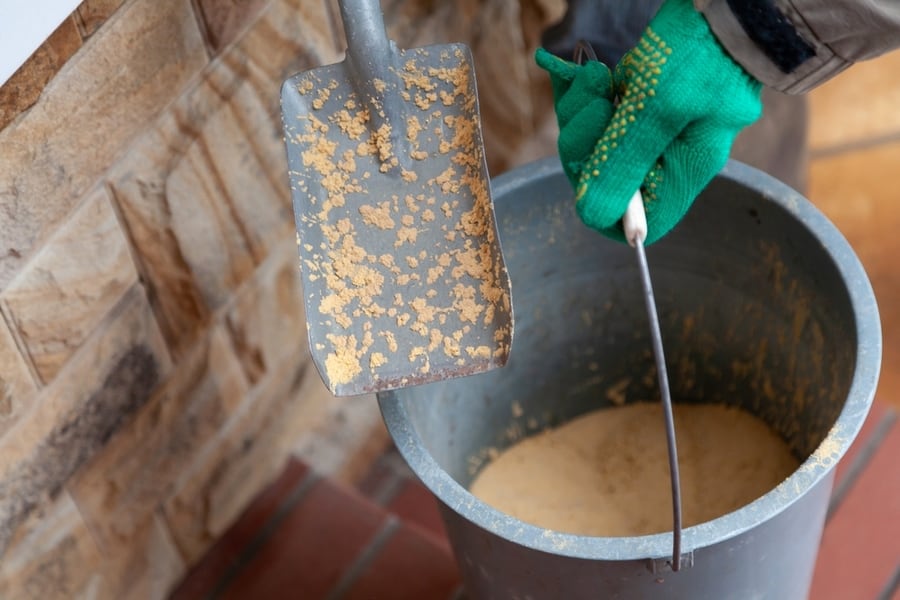
If any areas you’ve power washed are rough, gouged, or splintered, you’ll need to attack them with sandpaper.
Work from coarse or medium grit to fine grit, and wipe away debris with a soft cotton towel when done.
A tack cloth is also an excellent way to remove any sawdust. When finished, the sanded wood should feel smooth when you run your fingers along it.
If you have several areas that require sanding, an electric sander will help you take care of things faster.
Wear appropriate safety equipment, like goggles and hearing protection, if you break out your electric sander.
Apply a Finish To Match
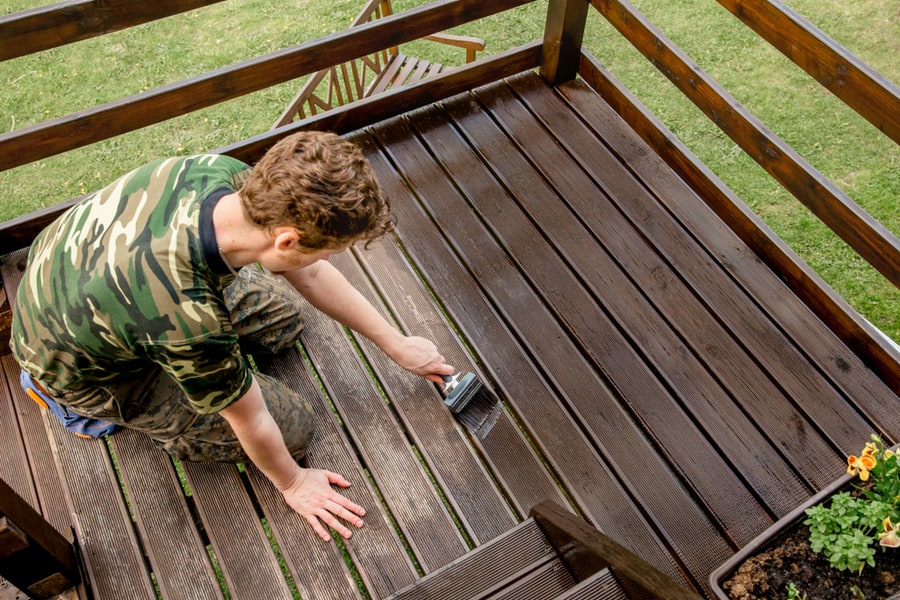
Unless your deck was raw wood, you’d need to apply a finish to blend in your pressure washer marks with the rest of your deck.
If you don’t have a finish to match your deck squirreled away in your garage or basement, don’t worry. Take a sample to your local paint store, and they can make a match in no time.
Make sure your deck is fully dry and debris-free before applying any finishes. Wipe any sawdust or debris with a dry cotton towel or tack cloth.
Apply your finish per the manufacturer’s instructions. Brush any areas your roller can’t reach and roll the remainder of your deck.
Purchasing the best finish and painting tools you can budget for will result in the best results.
The nature of decks – outside, exposed to wind, sunlight, rain, and snow – means their finishes deteriorate more quickly than the indoors of our homes. It’s baked into the cake.
When spot-applying stain, paint, or sealer, remember that the product may not match exactly, even if it’s the same product applied a few years ago. Your finish will have faded somewhat due to the elements. A close match may be the best you can achieve.
If your deck is unfinished, consider finishing it. Applying a paint, stain, or sealer will extend the longevity of your deck, help protect against the elements, and can enhance the natural beauty of your wood.
Enjoy Your Clean, Mark-Free Deck
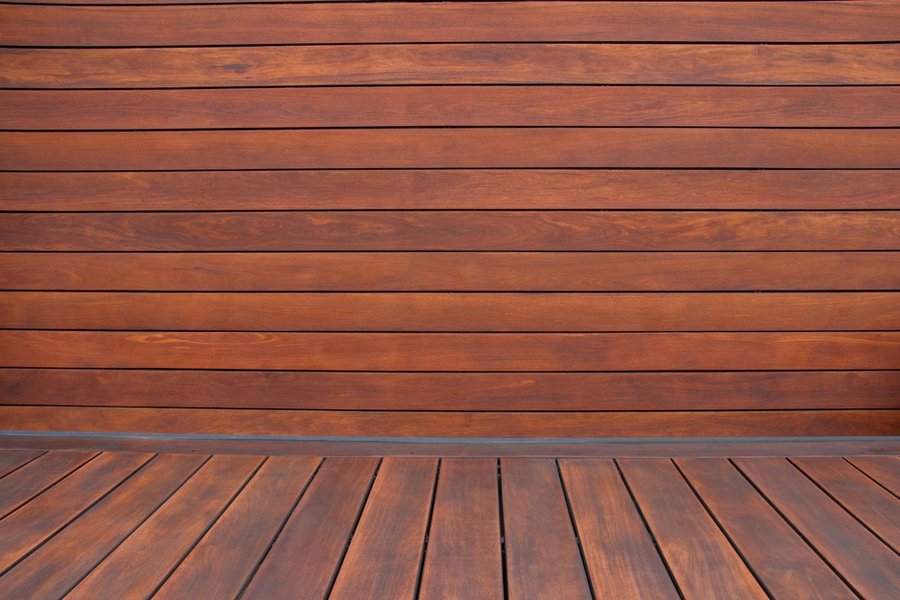
Send out those invites to your backyard barbeque – your deck is as good as new.
Using the correct technique when using a power washer will ensure that you don’t create any unsightly marks in the future. Always hold your wand the appropriate distance away, using the lowest PSI you can get away with.
Wash with the wood grain, from high to low, using a cleaner specifically formulated for decks only when necessary.
Once your deck is clean, sand any imperfections in the wood, then touch up any bare wood using a finish that matches your existing decking.
If your deck is unfinished, consider staining, painting, or sealing it, as these products can increase the lifespan of the wood and help prevent water damage.


